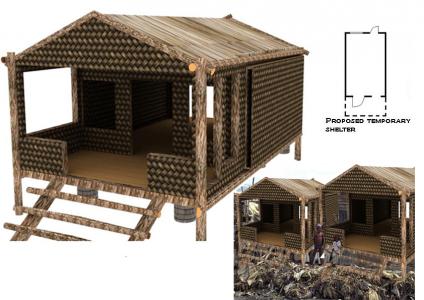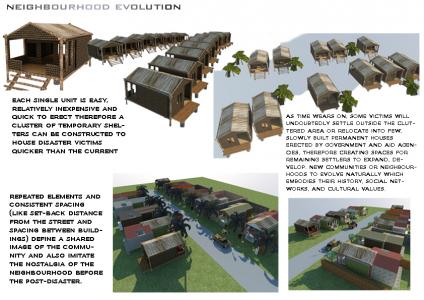| |
THE USE OF INDIGENOUS MATERIAL, FOCUSING ON PALM TREES, IN POST DISASTER RECONSTRUCTION
PORT AU PRINCE, HAITI
VINCENT ADIAMAH
UNIVERSITY OF PLYMOUTH, PLYMOUTH, UNITED KINGDOM
MR. ANDREW FOX
Full Document (PDF)
Abstract
|
The frequency of natural disasters, particularly in developing countries, has drastically increased in the recent years. One of the common predicaments faced during post-disaster is housing post-disaster victims in an unprecedented situation. While in many instances the provision of shelter may be inevitable, such provisions often neglect the fact that in the event of disasters, families and communities lose more than the mere buildings - and that is home. These ‘homes’ or dwellings are the reflection of their cultural beliefs, social and economic practices and aspirations as well as their relation to the community and the environment. As has been addressed by many researchers, the persistent failure of relief and reconstruction programs in mostly developing nations are modelled predominantly on the centralised planning and architecture adaptation of foreign nations which are perceived by locally poor communities as alienating and bearing remote significance to their vibrant culture. The use of local materials such as palm tree can be a significant building material that can address this alienating concept perceived within post-disaster communities of the appropriateness of foreign building resources. This study took an exploratory study into Polynesian architecture where the palm tree is extensively used as a building material and from this understanding and factual data developed a post-disaster conceptual temporary model that embraces the cultural, social and vernacular architecture of Haiti.
|
| |

image of the settlement
(architectural scale or example of unit)

image of the settlement
(urban scale or group of housing units)

diagram of the actors
involved and the relationships between them |
|



